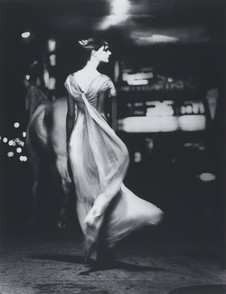Lillian Bassman - Gifted Gallery
- Lilium

- Feb 8, 2023
- 2 min read

Lillian Bassman, born 15 June 1917, was an American photographer and painter, best known for the high contrasts between light and dark, the graininess of her finished photos, and the geometric placement and camera angles of the subjects.
Her parents were Jewish intellectuals who emigrated to the United States from Ukraine (then in Russia) in 1905 and settled in Brooklyn, New York. She grew up in Brooklyn and Greenwich Village, New York, and studied at the Textile High School in Manhattan with the Russian emigrant and future artist Alexey Brodovitch, and graduated in 1933.
She first met her future husband, photographer Paul Himmel at Coney Island at age six. They met again at 13, and started living together when she was 15. They were married in 1935, and had two children. Himmel became a fashion and documentary photographer and the couple enjoyed 73 years of marriage together.
From the 1940s until the 1960s Bassman worked as a fashion photographer for Junior Bazaar and later at Harper's Bazaar where she promoted the careers of photographers such as Richard Avedon, Robert Frank, Louis Faurer and Arnold Newman.
Under the guidance of Alexey Brodovitch, she began to photograph her model subjects primarily in black and white. Her work was published in Harper's Bazaar from 1950 to 1965.
By the 1970s Bassman's interest in pure form in her fashion photography was out of vogue. She turned to her own photo projects and abandoned fashion photography. In doing so she tossed out 40 years of negatives and prints—her life's work. A forgotten bag filled with hundreds of images was discovered over 20 years later. Bassman's fashion photographic work began to be re-appreciated in the 1990s.
She worked with digital technology and abstract color photography into her nineties to create a new series of work. She used Photoshop for her image manipulation.

Bassman died on February 13, 2012, at age 94. Bassman became one of the last great woman photographers in the world of fashion. A generation later, Bassman's pioneering photography and her mentor Alexey Brodovitch's bold cropping and layout innovations were a seminal influence on Sam Haskins and his black and white work of the sixties.
Reading Recommendations & Content Considerations
Women & Paul Himmel
























































































































































Comments